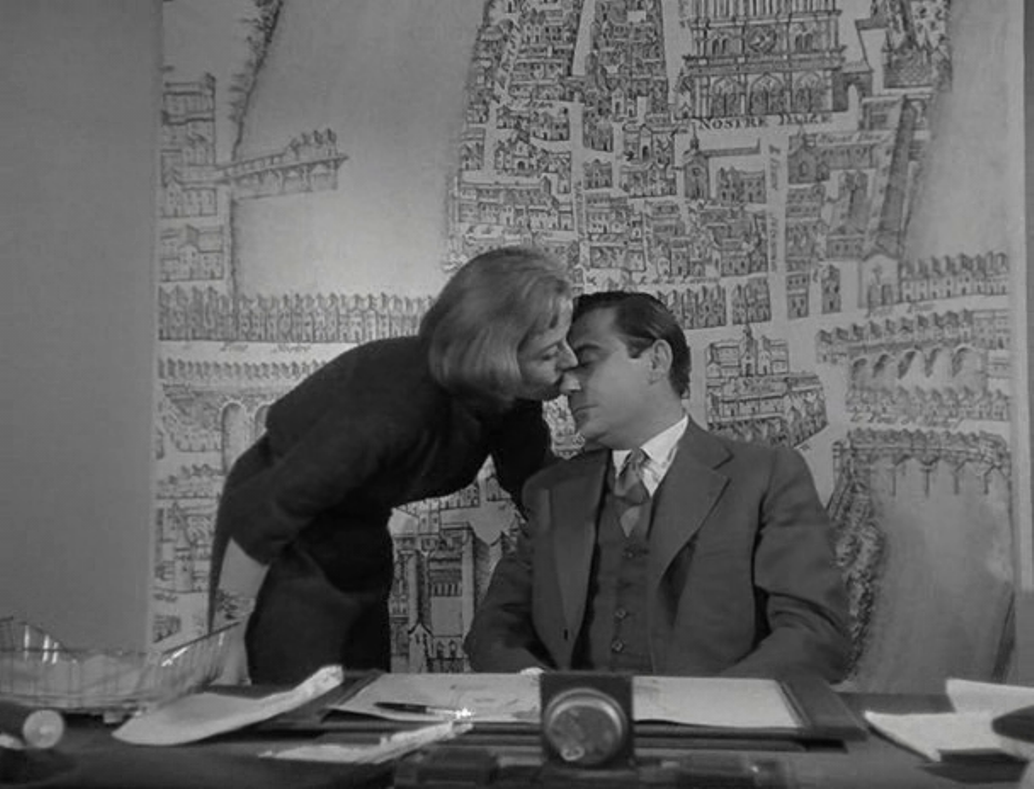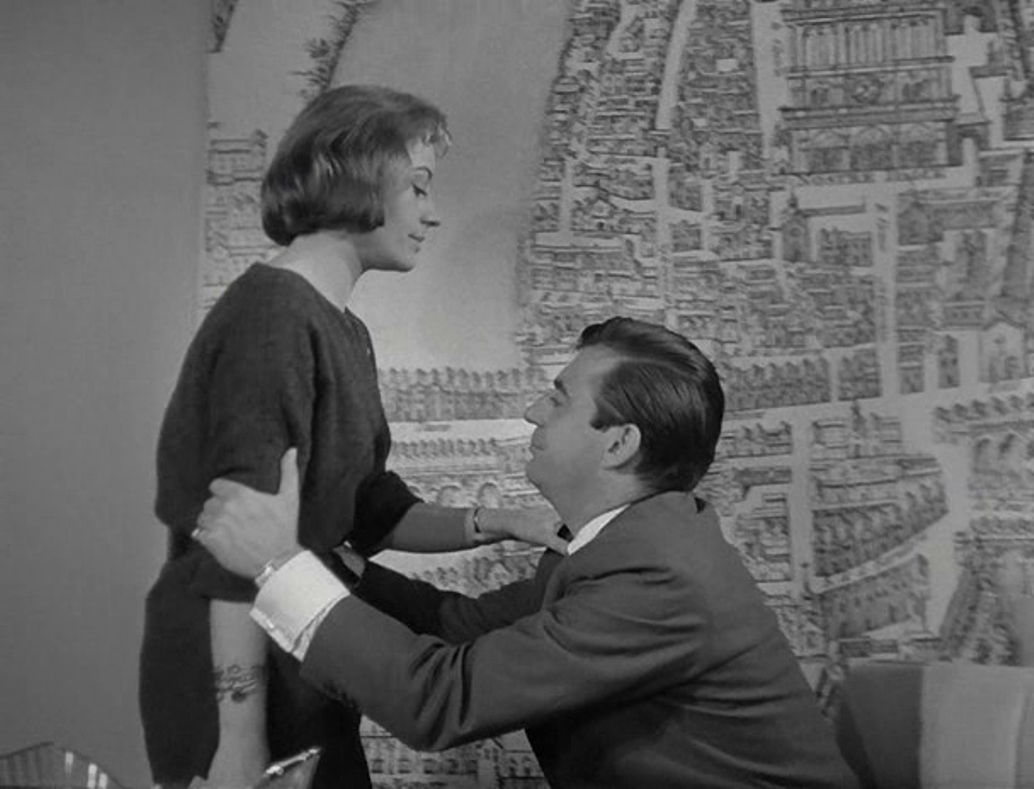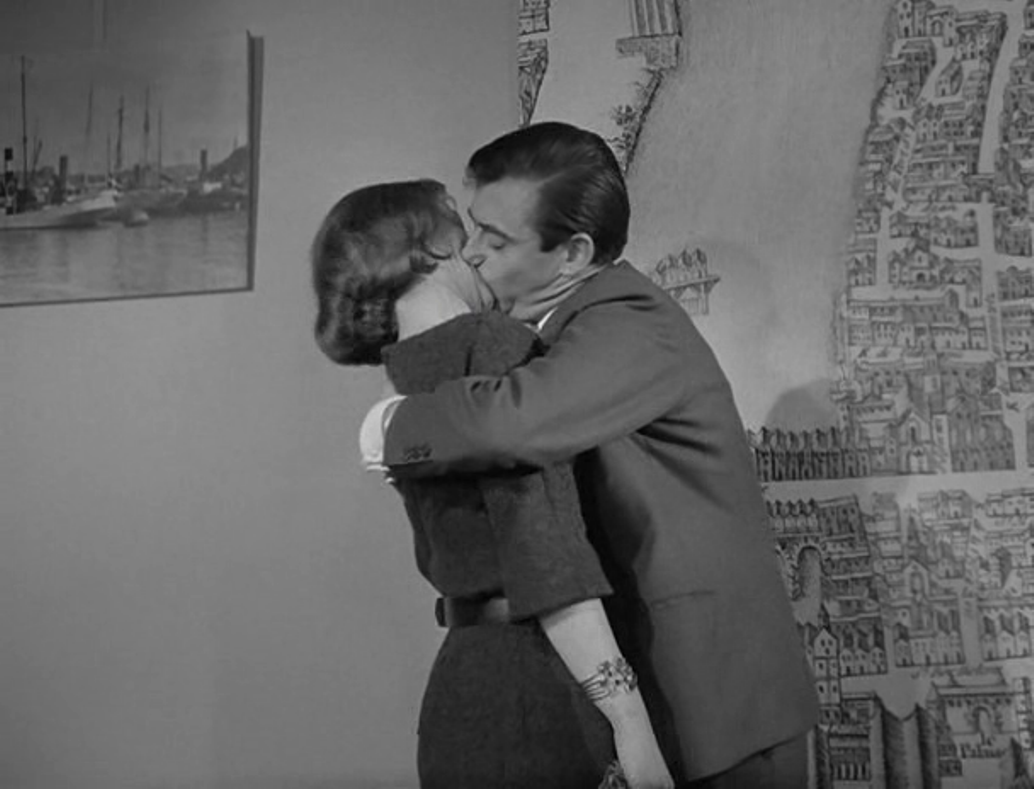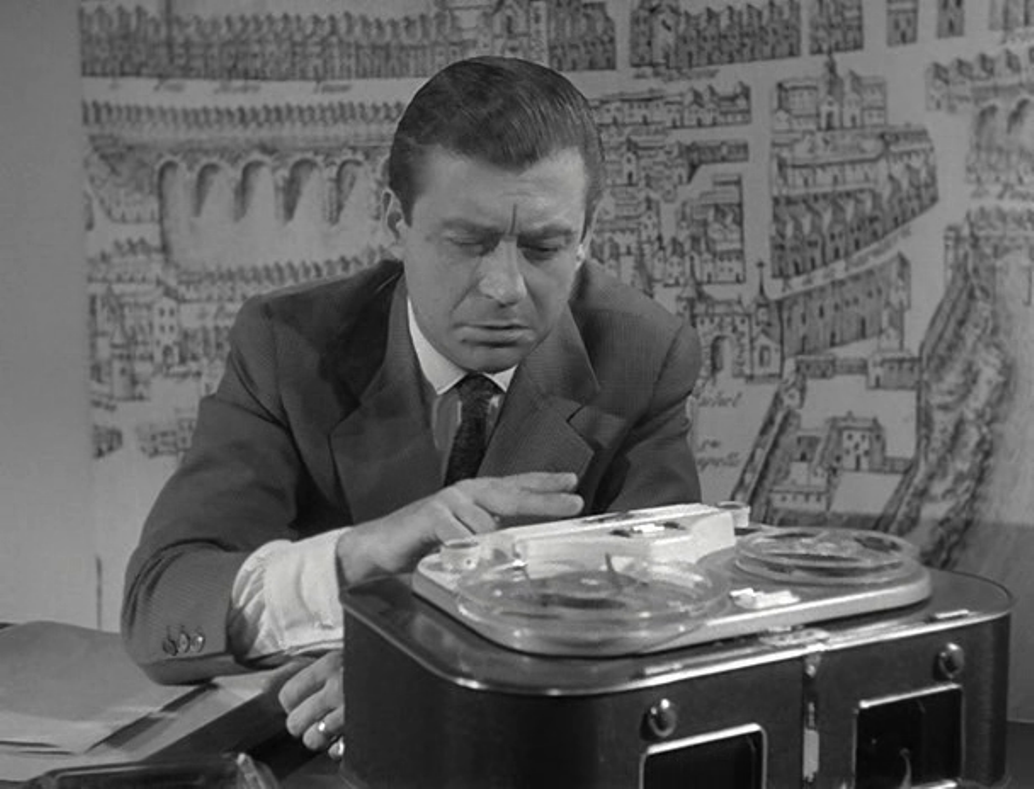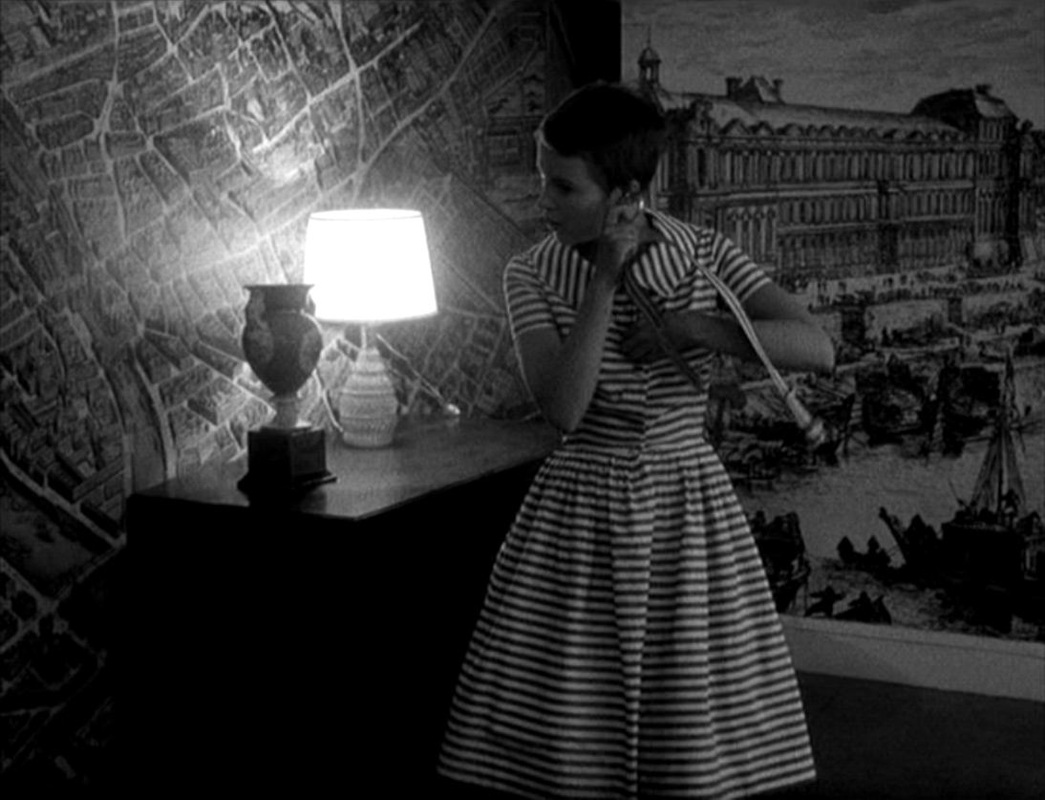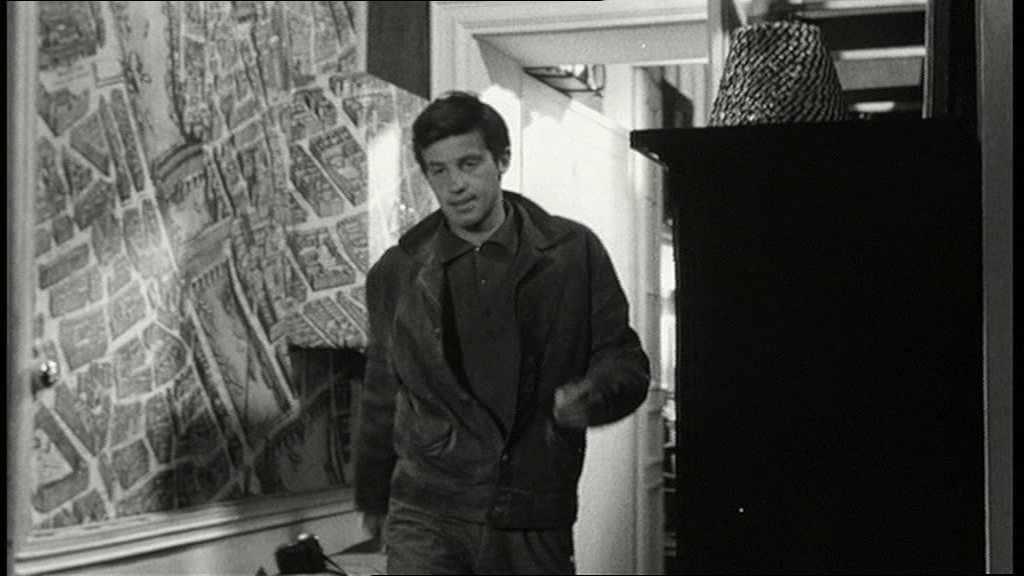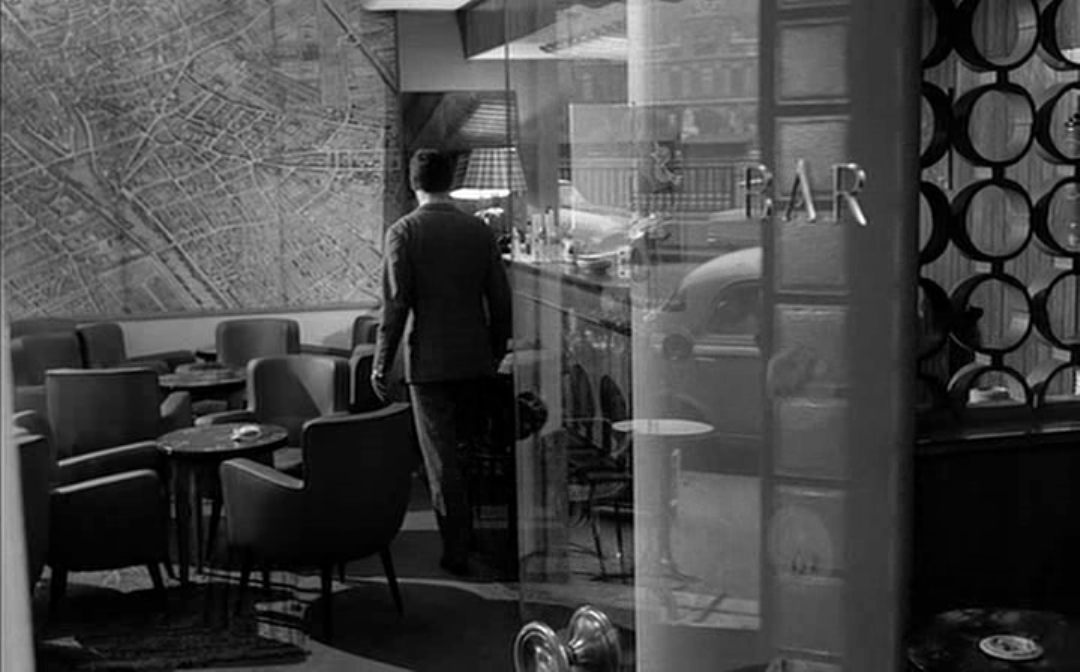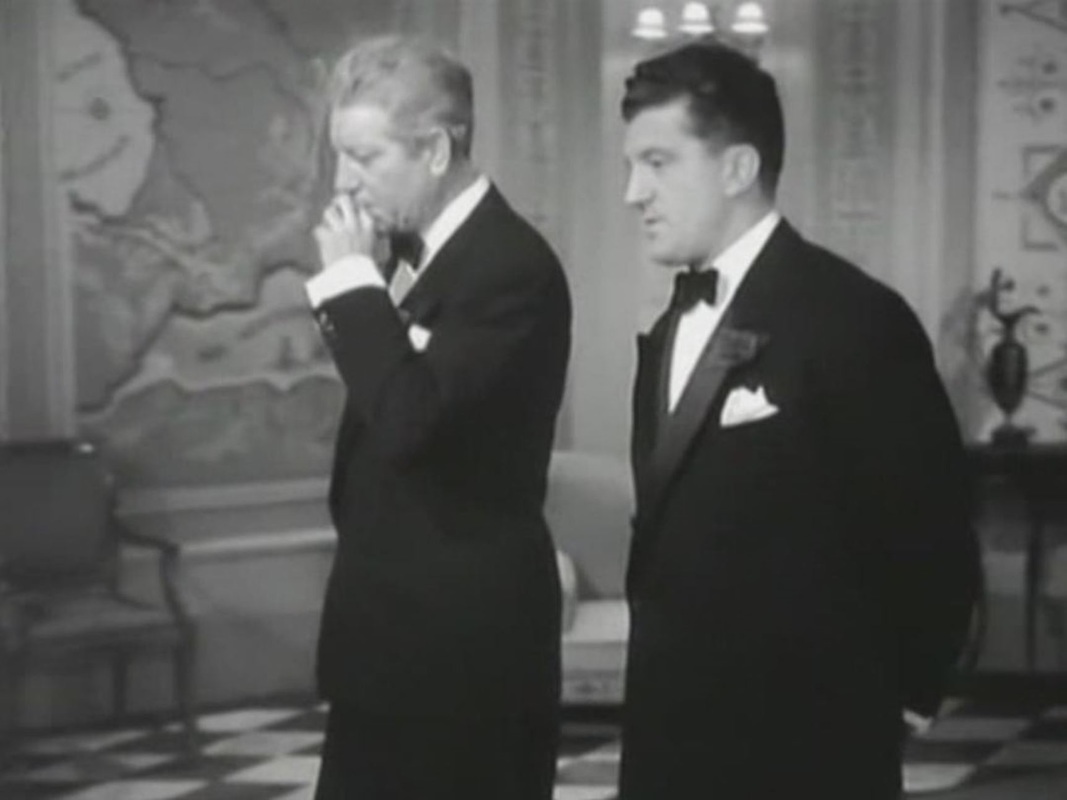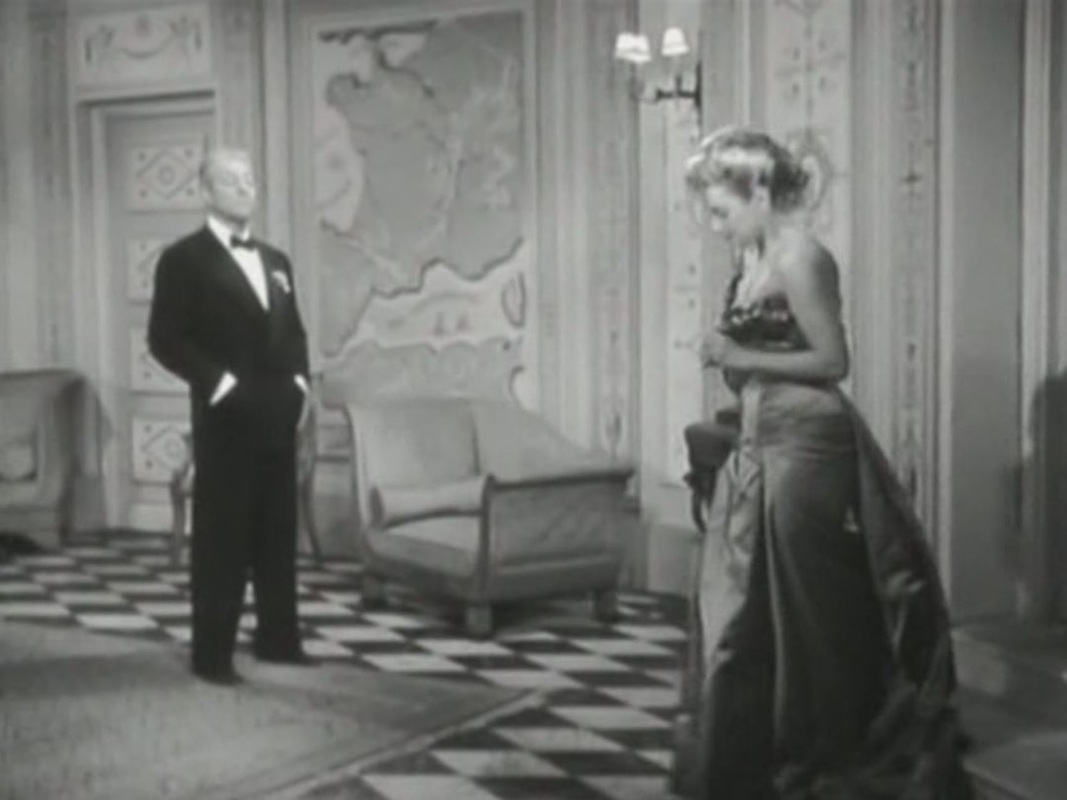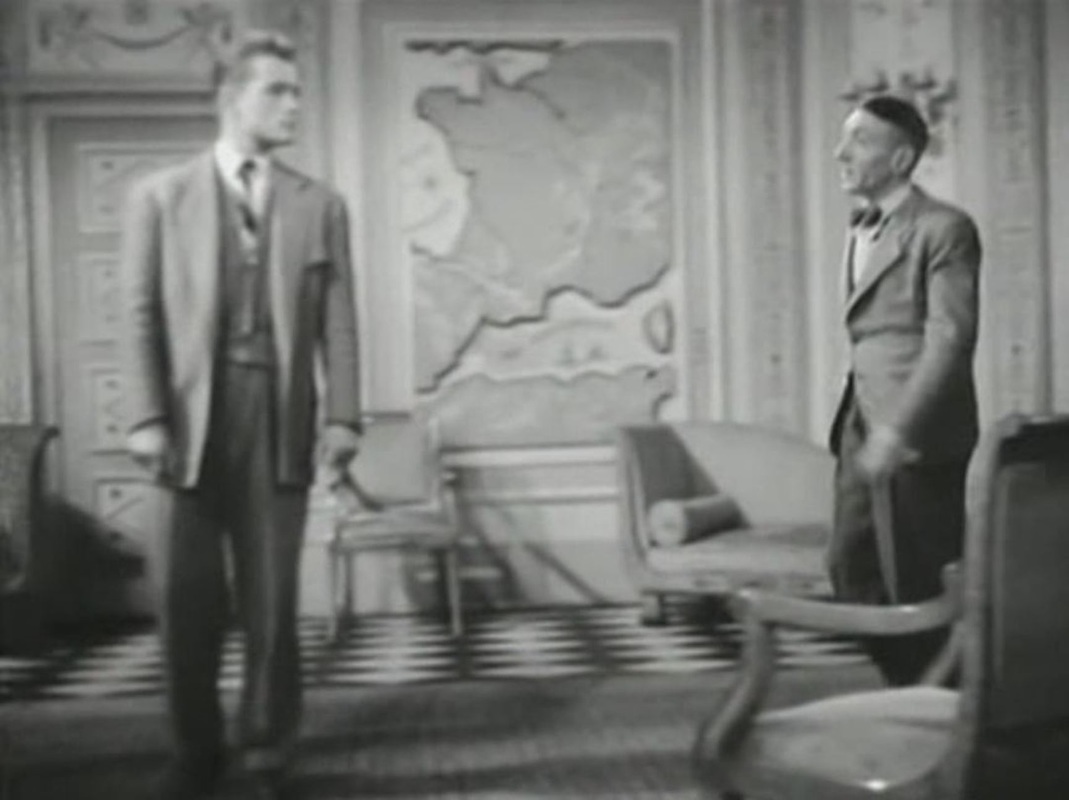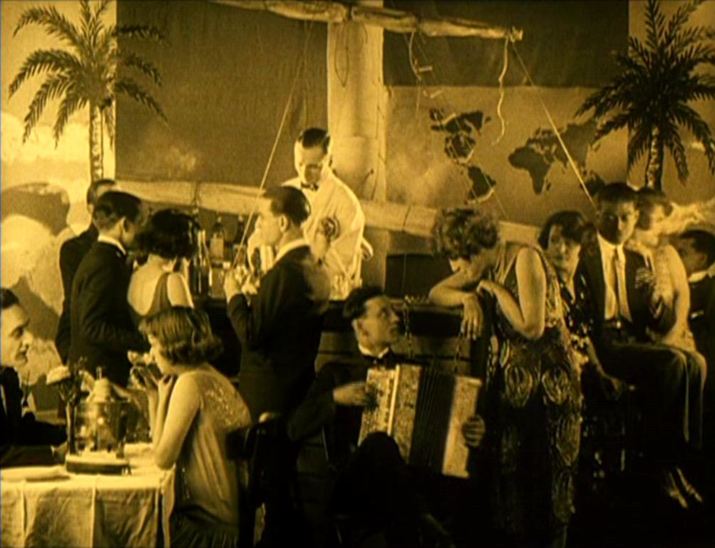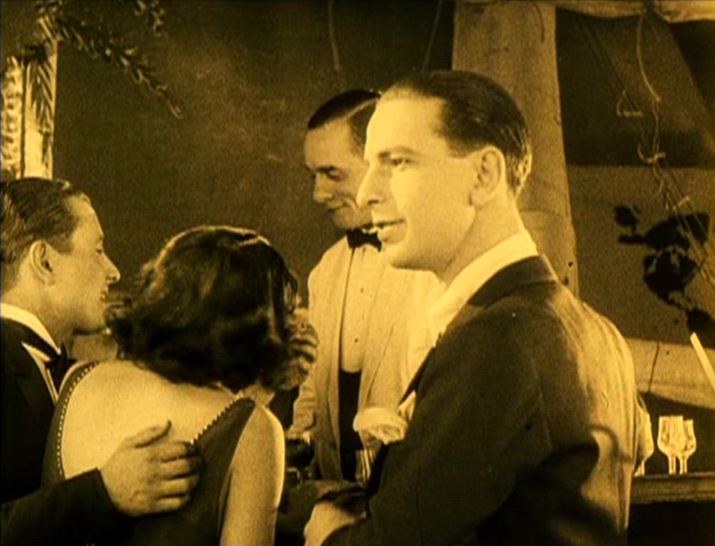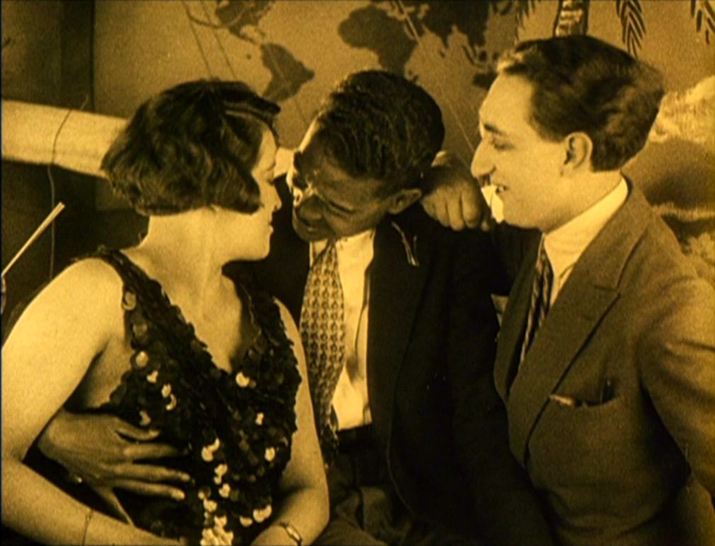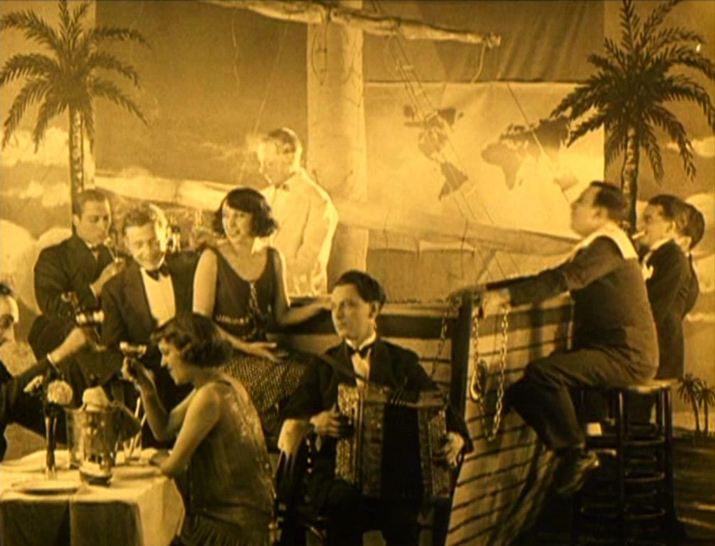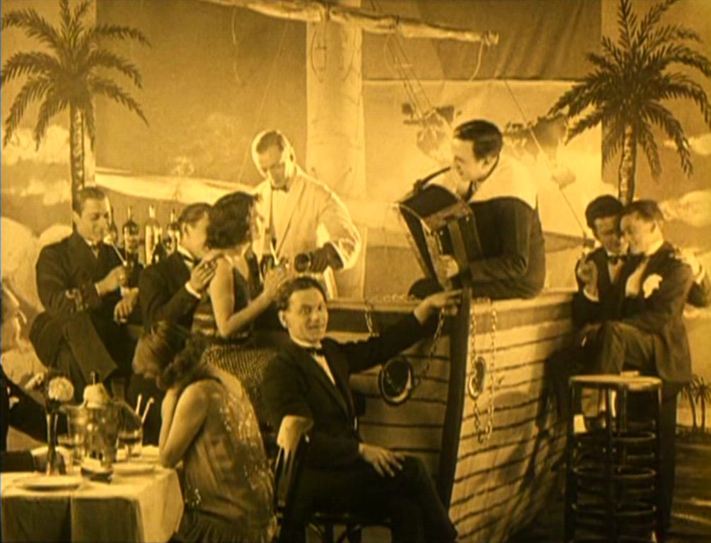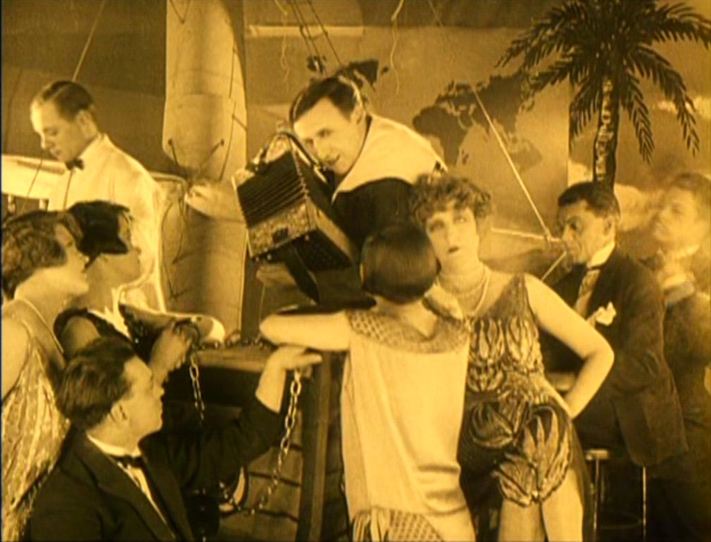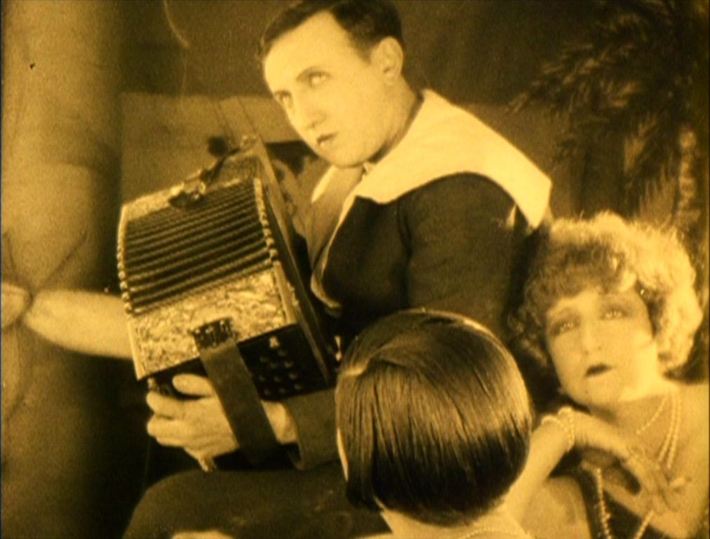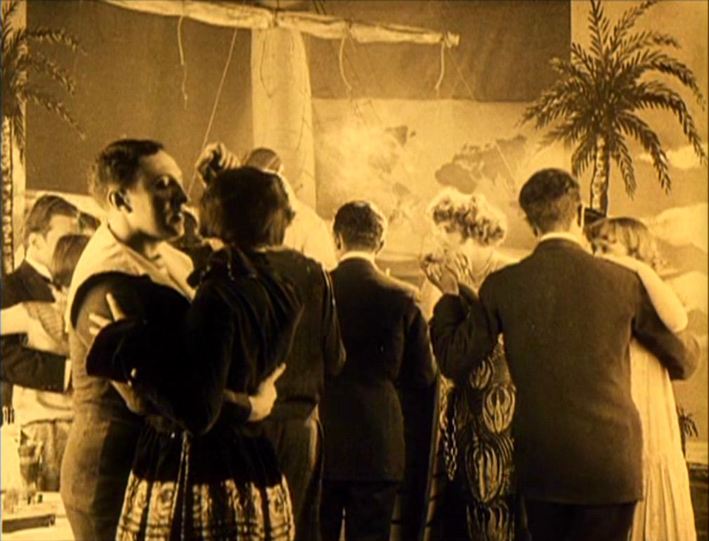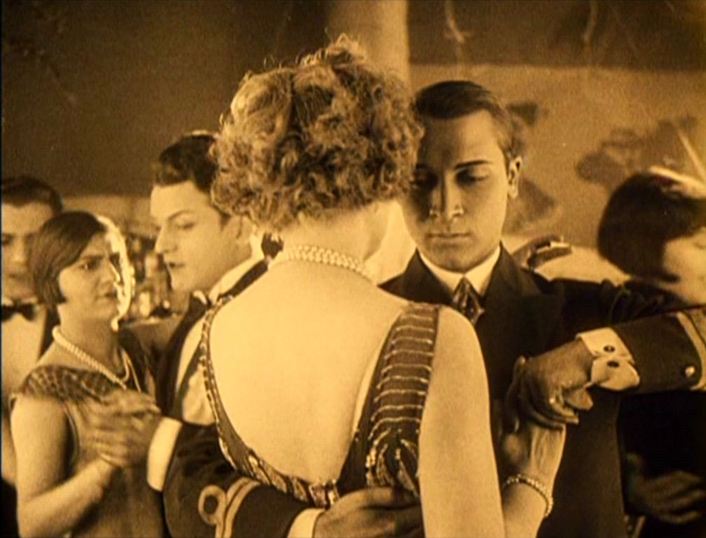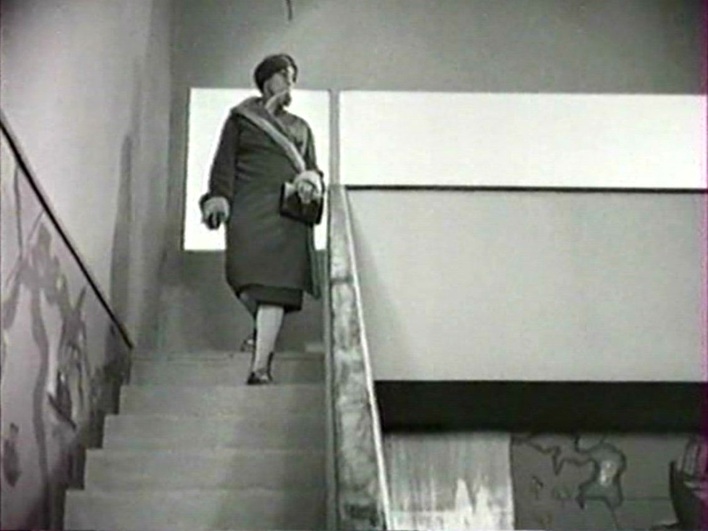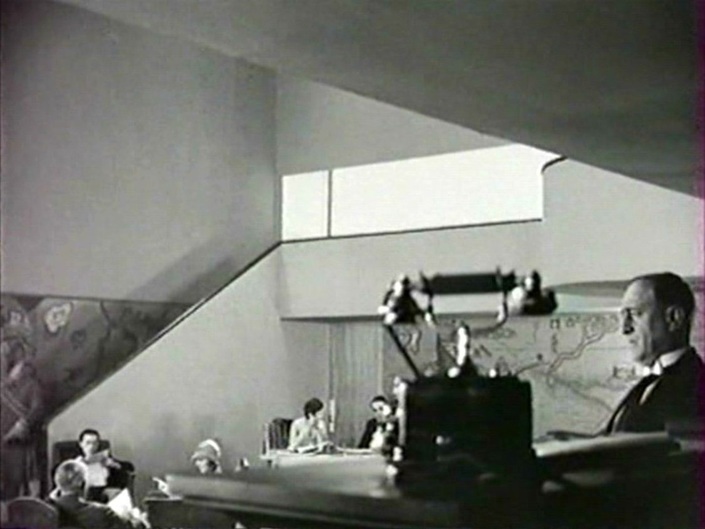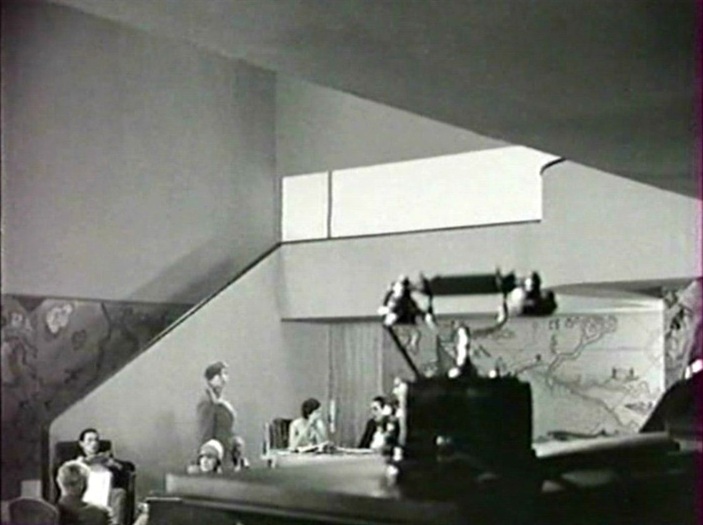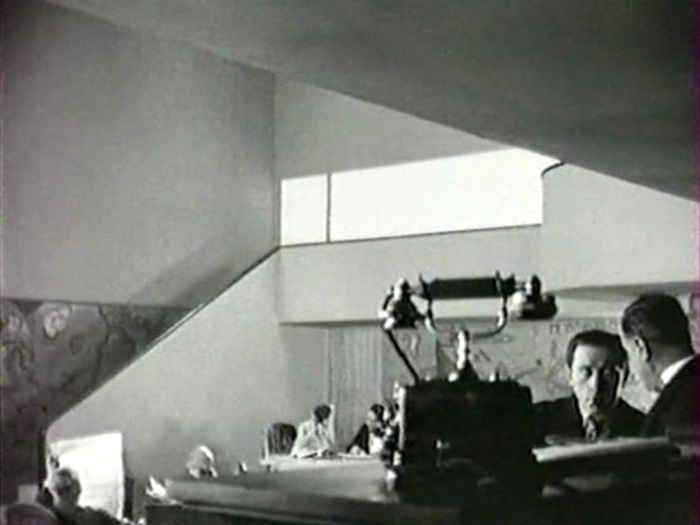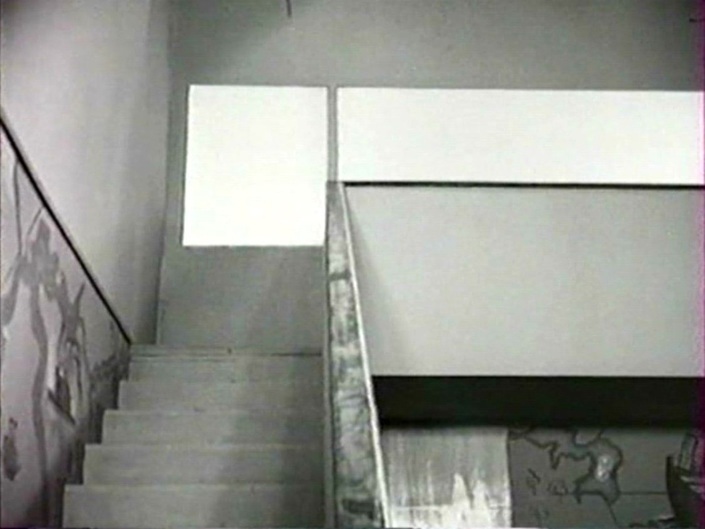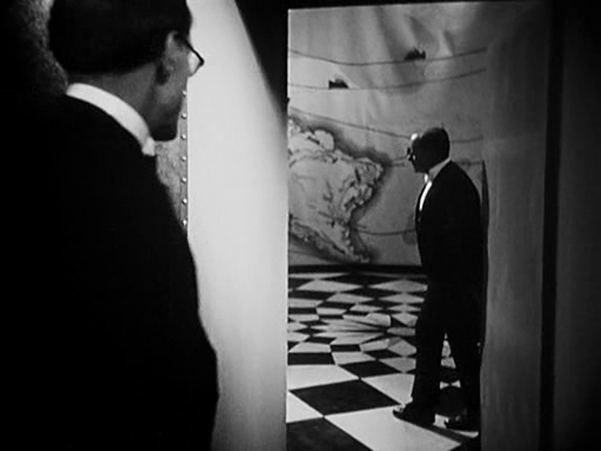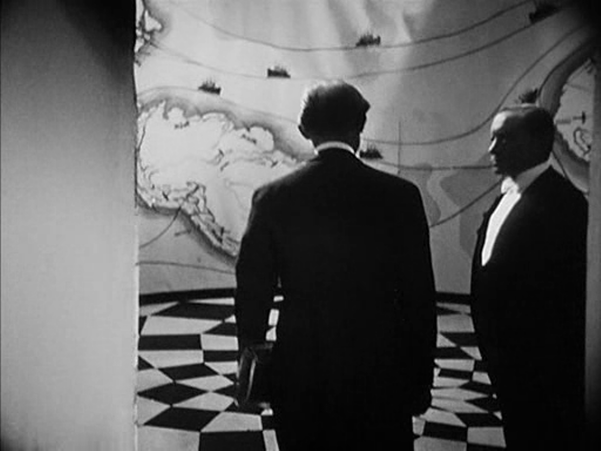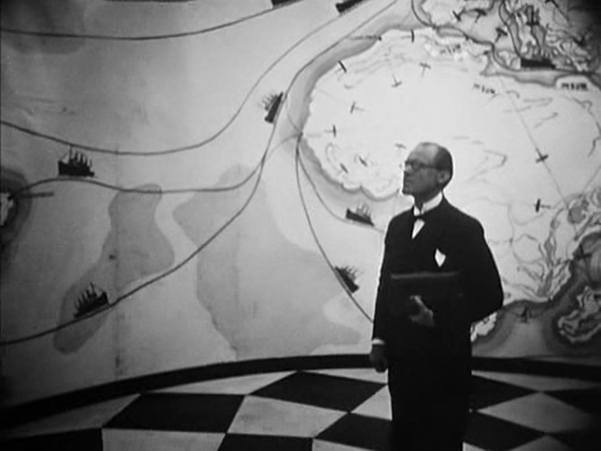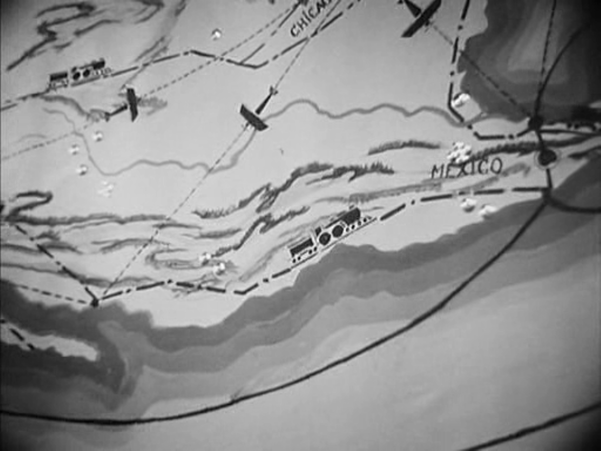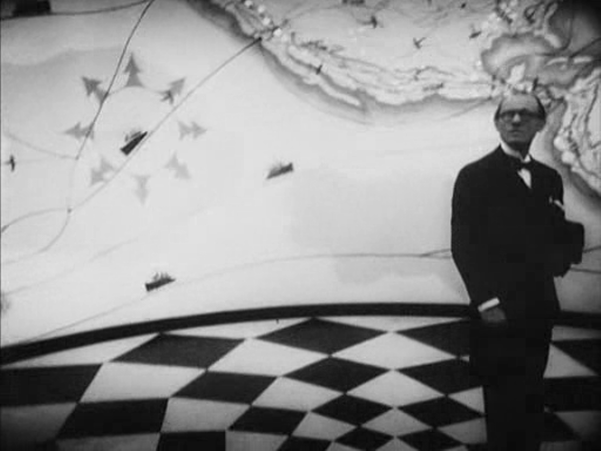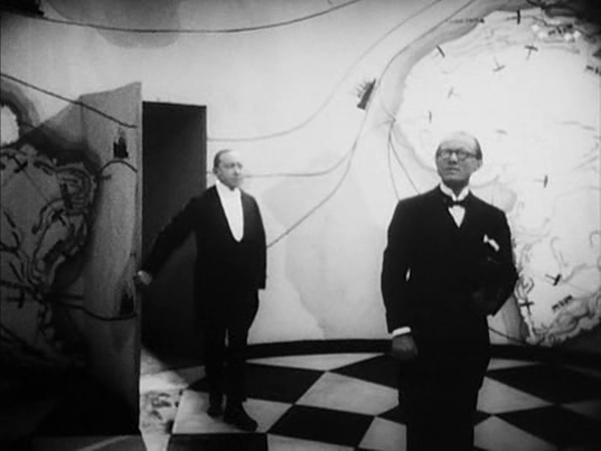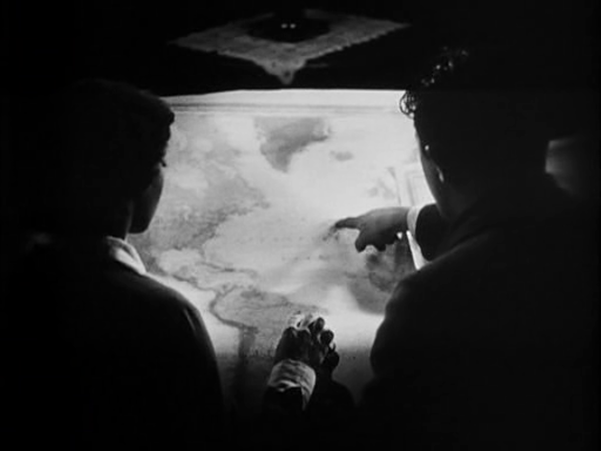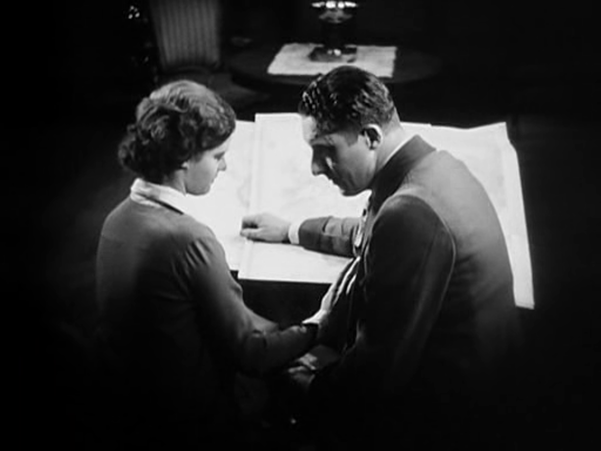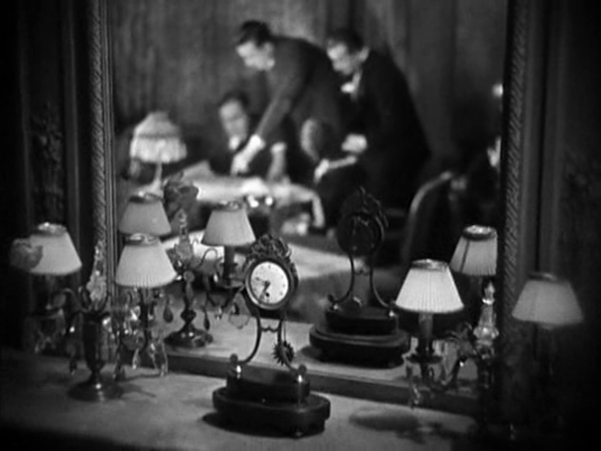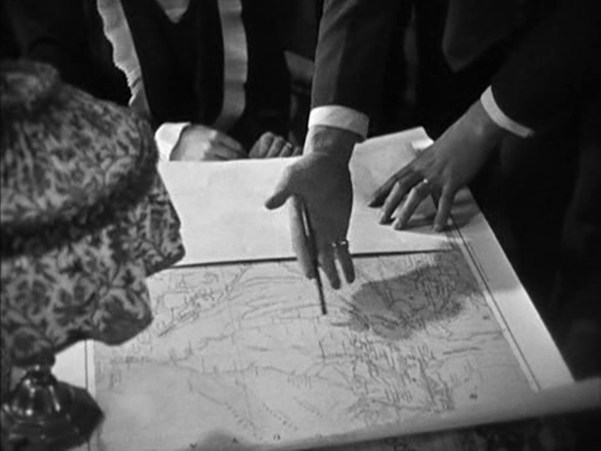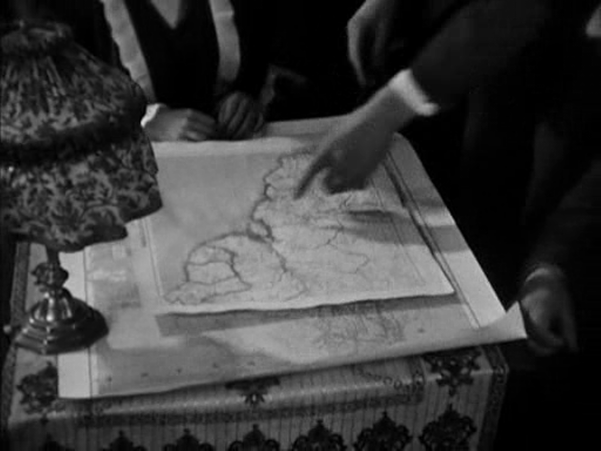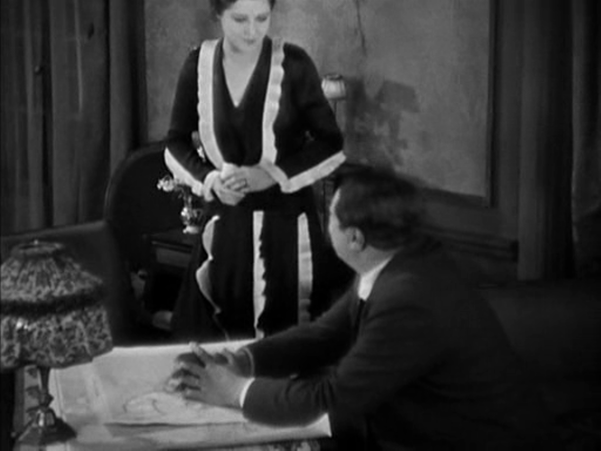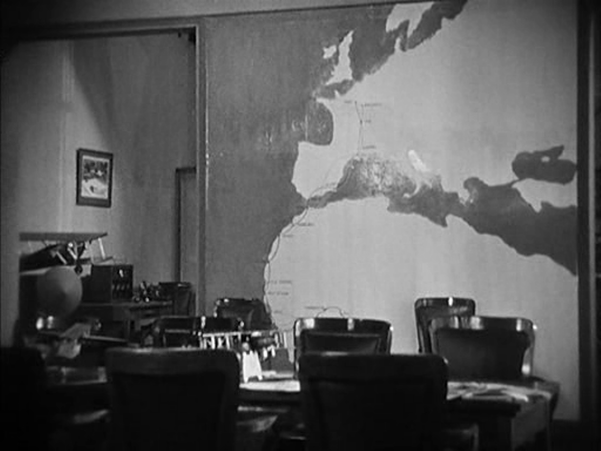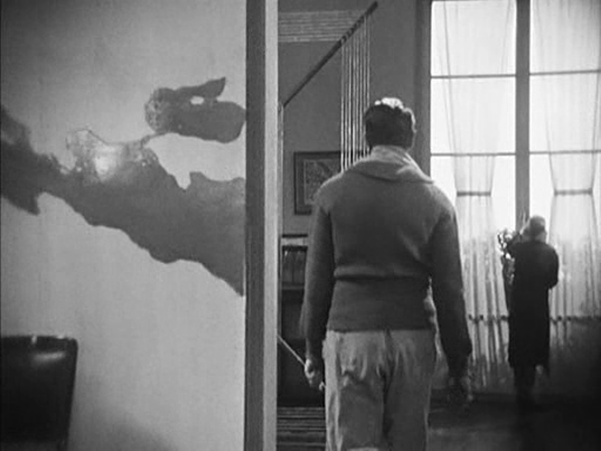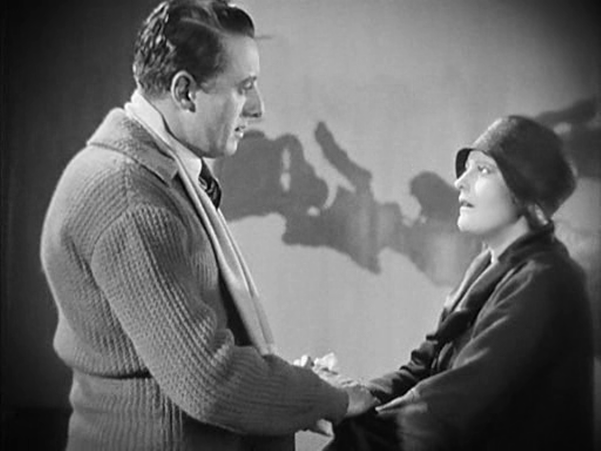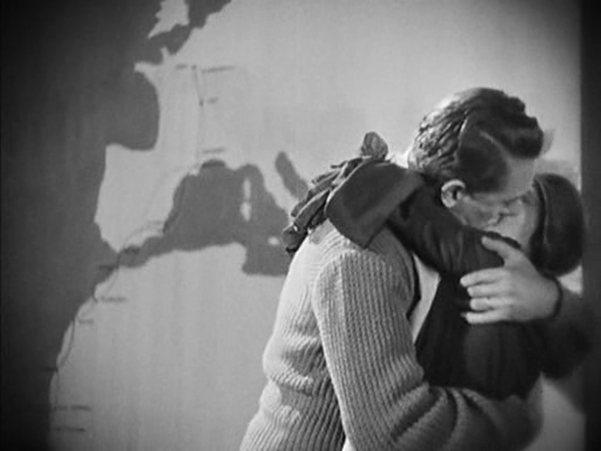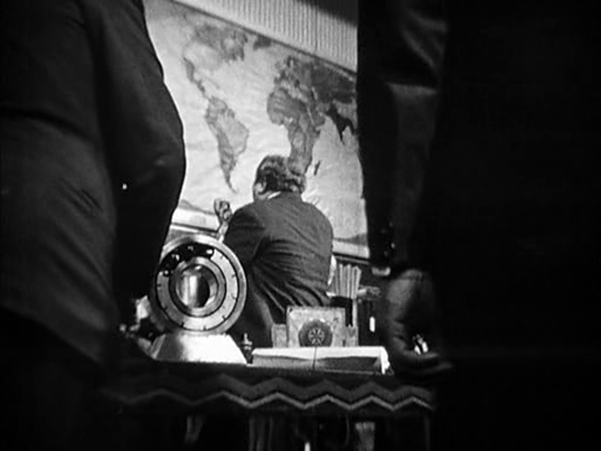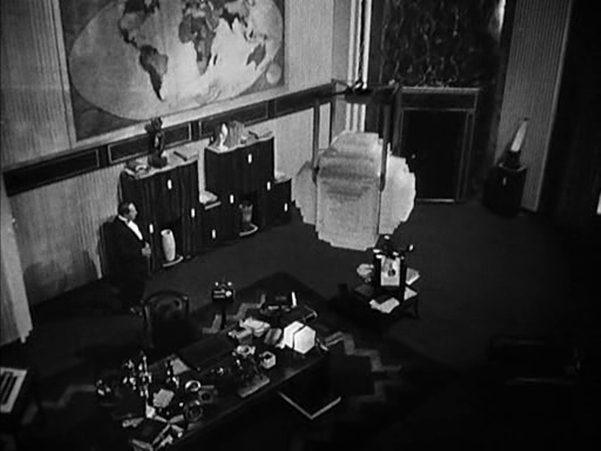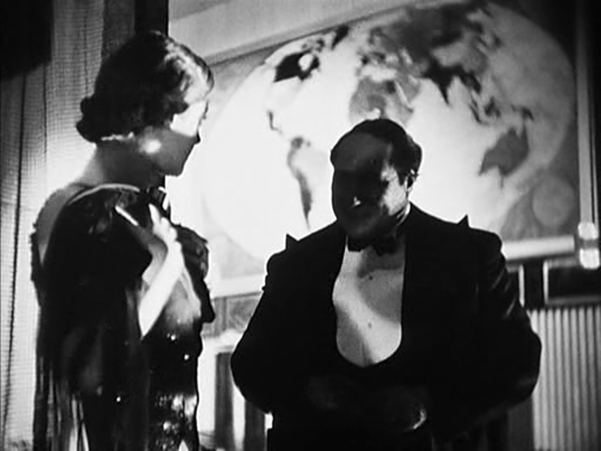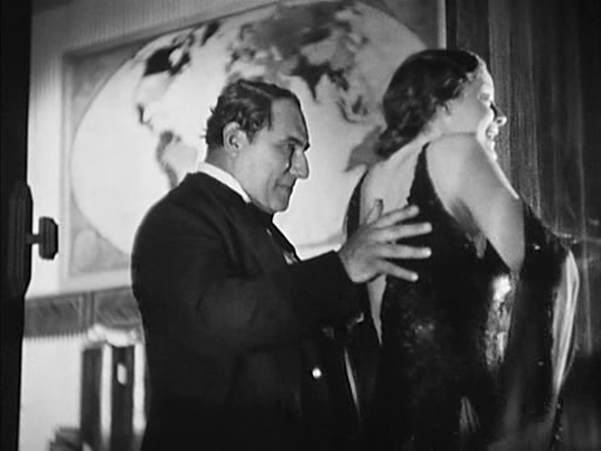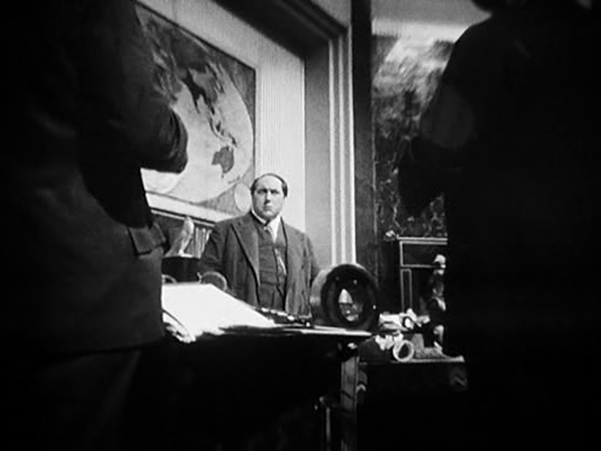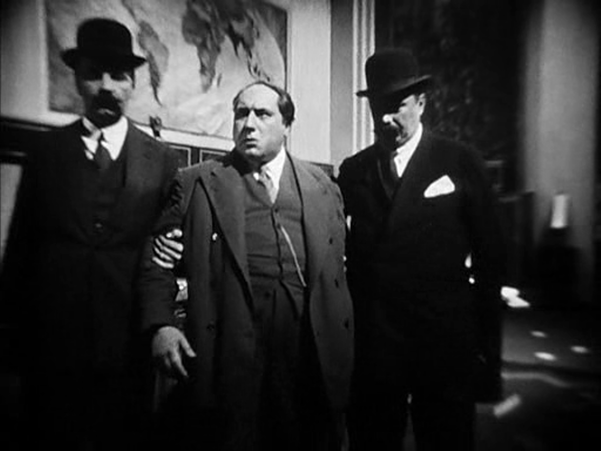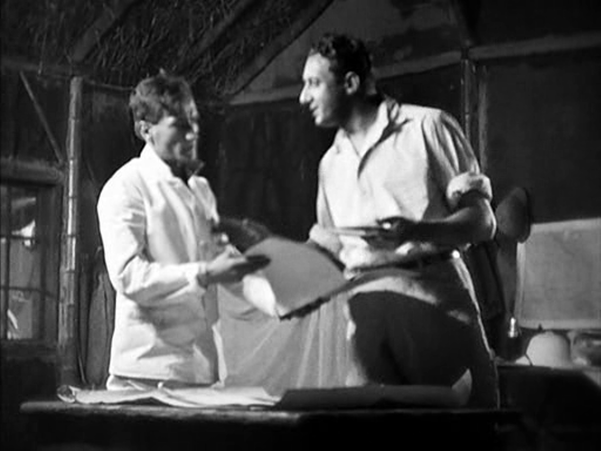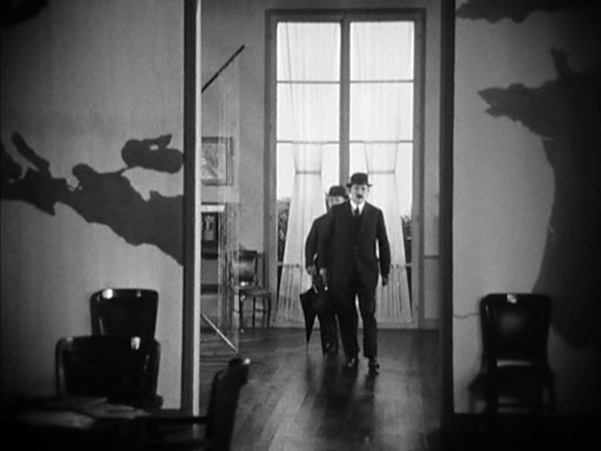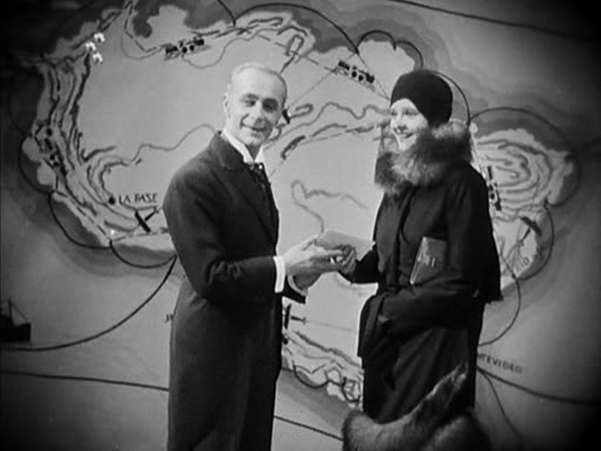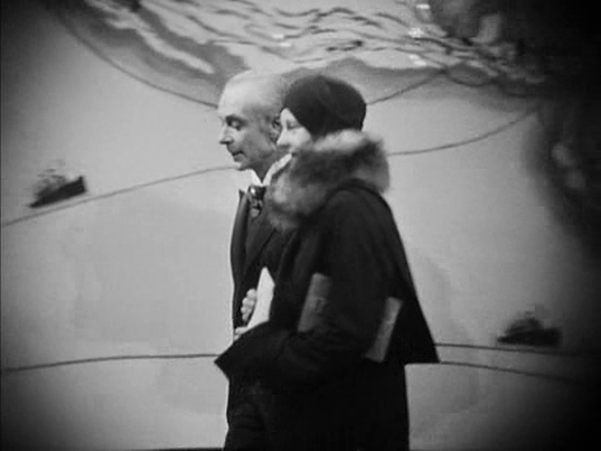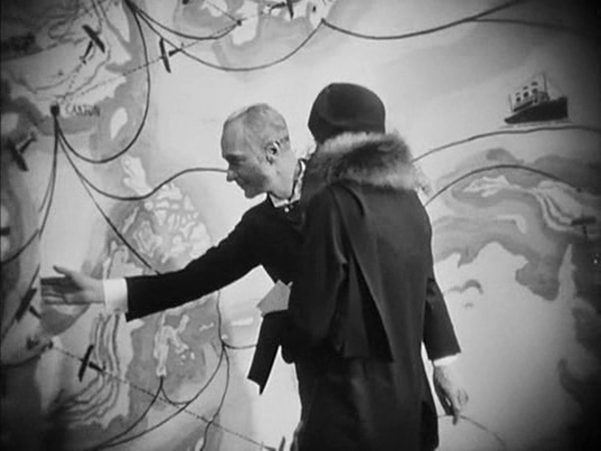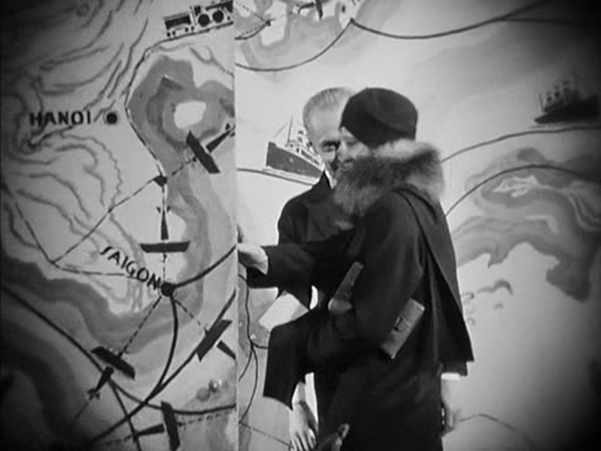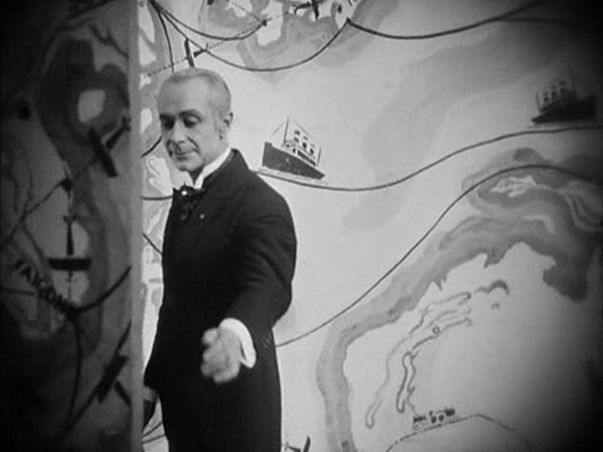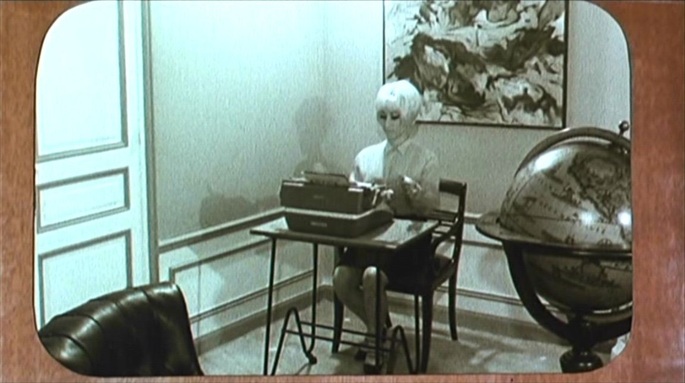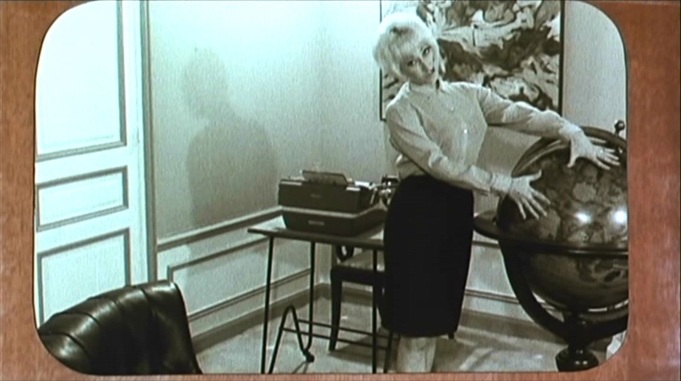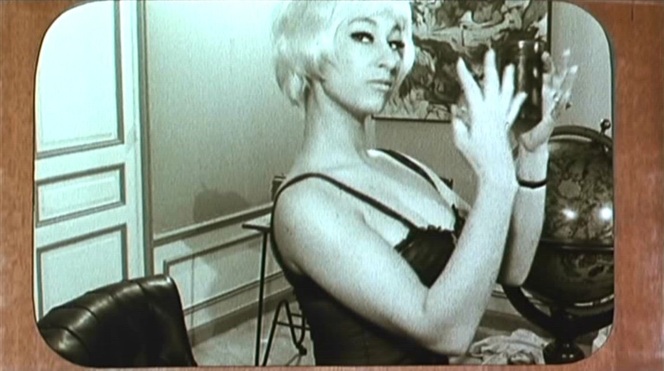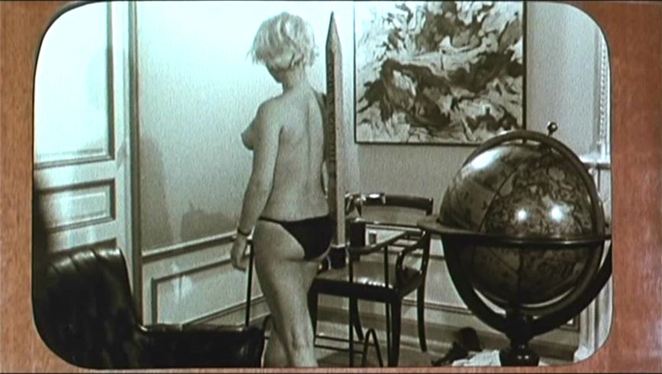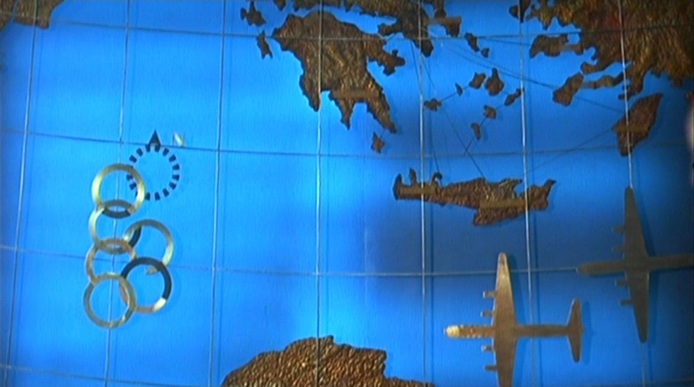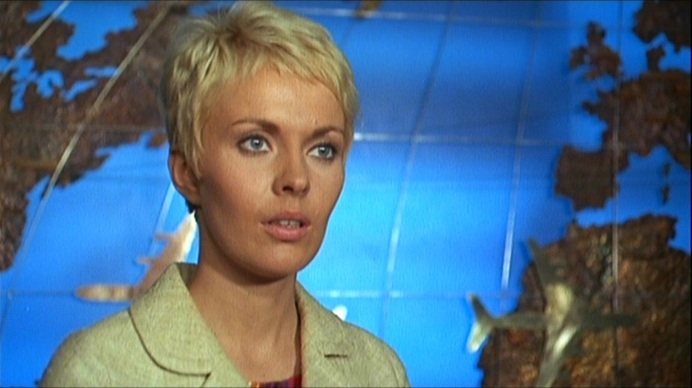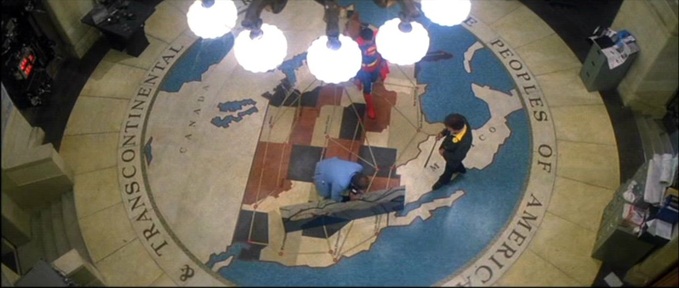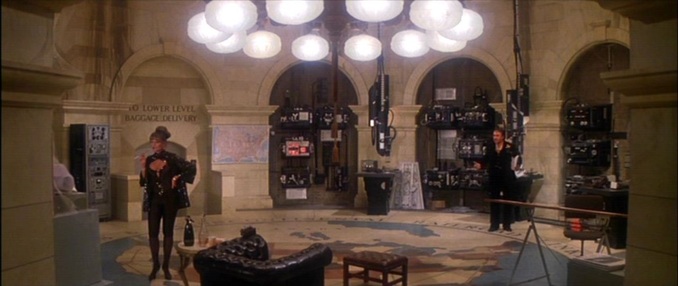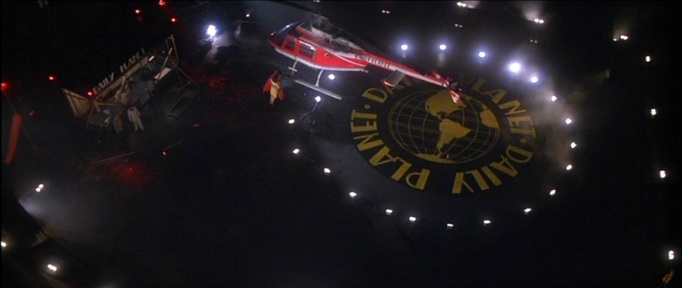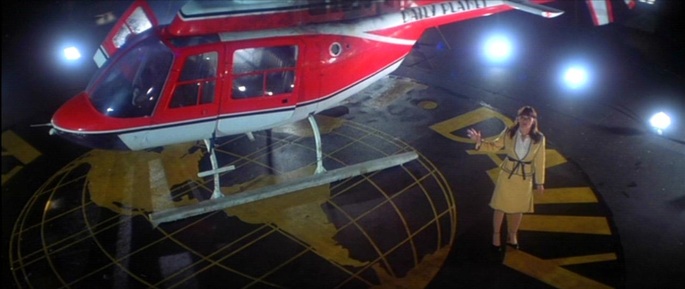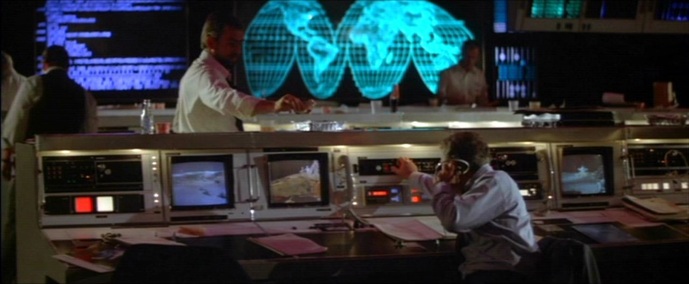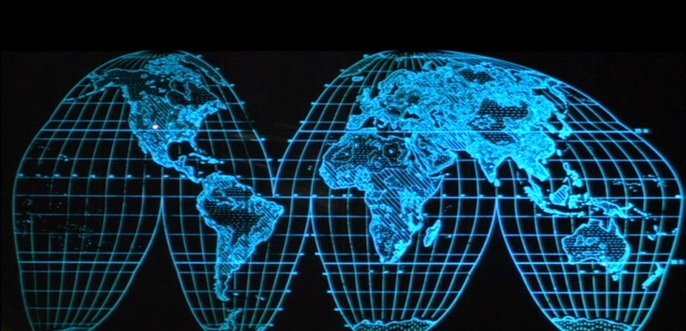|
In Le Samourai (1967), François Périer again has an office with an old Paris map as décor: And here are three further instances of old Paris maps as décor:
0 Comments
Most of Maldone is shot in ‘natural décors’ or in naturalistic constructions of old world rurality, but the excursion into modernity around which the drama turns connects this film to its contemporary, L’Herbier’s L’Argent. Grémillon’s art director, André Barsacq, worked with Lazare Meerson on the sets for L’Argent, and we have here another Modernist room decorated with maps. In this case, as Léon Barsacq writes of his brother’s work, the modern décors are, ‘for the period, of a great sobriety’ - Le Décor de film, 1895-1969 (Paris: Henri Veyrier, 1985), p.59.
I can’t tell what places the cartographic décor represents, but clearly the irregularity of coastlines is designed to contrast with the angular architecture of this hotel foyer. The only mapshot in the film. By having a hollowed-out, reversed outline of the United States frame a correct map, the shot neatly suggests the doubling and deception that is central to the film. Emptiness and triviality are also suggested as themes.
Of the five spaces in which maps figure in L'Argent, the first is the most spectacular. We follow an agent of the banker Gundermann as he is led by a butler into an antechamber decorated to represent the reach of the banker's power. In combination with the cinematography, this mise-en-scène also displays the distorting, disorienting force of money. The second space is more conventional: in their modest apartment. the naive adventurer hero Hamelin and his wife Line examine a map of the Americas, though it becomes a mere backdrop to the expression of their love for each other. Later, in the same space, Hamelin explains his plans to the banker Saccard, with a view of a more detailed map of the region that Hamelin proposes to exploit for oil. We first see the scene diffusely, in a mirror, before passing to two readable mapshots. Next, in a room at the airport from which Hamelin will take off on a solo flight across the Atlantic, Line looks on in terror at the thought of the danger he will face. He enters, first seen as a shadow cast over a map of Europe and North Africa, which then becomes the backdrop to their passionate embrace on parting. The most often shown space in the film is the banker Saccard's office, dominated by a map of the world. Against this backdrop we see Saccard manipulate markets on a global scale, we see him attempt to seduce Line, and finally we see him arrested for fraud. Prior to Saccard's arrest we see Hamelin in Guyana (here with Antonin Artaud as Saccard's secretary). A map on the wall serves as establishing decor, but it cannot compete with the cartographic spectacles on display back in Paris. Hamelin returns to France and we see two policemen waiting to arrest him in the same room at the airport where he had kissed Line farewell. This time we see more of the cartographic decor, including the west coast of France: The film's denouement involves Line approaching Gundermann, and we see again, in more detail, his spectacular antechamber: The decor of L'Argent is one of Lazare Meerson's finest achievements, especially in the cartographic configurations of this last, framing space.
‘Embodying the dynamics of journey, cinema maps a heterotopic photography.’ In ‘Mapping the subject’ (1995), required reading for anyone interested in the relation of topography to representation, Steve Pile and Nigel Thrift were perhaps the first to quote a since much read page from Giuliana Bruno’s 1993 book Streetwalking on a Ruined Map, though by accident the word ‘photography’ was substituted for Bruno’s ‘topography’. Heterotopic photography is a concept yet to be fully explored.
Bruno’s original text reads as follows: Cinematic pleasure belongs to the range of erotic pleasures of the nomadic gaze first known to the traveler and the flaneur and then embodied, by way of panoramic spatio-visuality, in the modes of inhabiting space of transitorial architectures. Suggesting these historic aspects of the fascination of the apparatus, and highlighting its fantasmatic connection to travel and landscaping. One looks back not only to early cinema but also 'back to the future'. This view offers numerous avenues for future studies. One can place the art of " unconscious optics" in the context of contemporary forms of intercultural traveling and sites of spatio-temporal tourism, of which airplane cinema is the ultimate metonymy. For if "the unconscious is housed," it is also “moving”. Embodying the dynamics of journey, cinema maps a heterotopic topography. Its heterotopic fascination is to be understood as the attraction to, and habitation of, a site without a geography, a space capable of juxtaposing in a single real place several possibly incompatible sites as well as times, a site whose system of opening and closing both isolates it and makes it penetrable, as it forms a type of elsewhere/nowhere, where "we calmly and adventurously go travelling". Thus, we female spectators, in the midst of the "far-flung ruins and debris" of our old enclosed prison world, may go traveling. As we move through filmic architectures, as in "streetwalking" through the meter-polis, our mother-city, we reclaim forbidden pleasures – wandering through erotic geographies. Giuliana Bruno, ‘Streetwalking around Plato’s Cave’, in Streetwalking on a ruined map: cultural theory and the city films of Elvira Notari (Princeton NJ: Princeton University Press, 1993), p.57. See also: Steve Pile & Nigel Thrift, ‘Mapping the subject’, in Mapping the Subject: Geographies of Cultural Transformation (London: Routledge, 1995), p.22. ‘What doe the cinema of space par excellence think about when it dreams of Baudrillard? It thinks about lines (dialectical polarity), about maps (the precession of the map over the territory), about networks (reversibility and the circular forms of commutation), about hyperbola (potentialisation), about interstices (viral strategies) and about spirals (ecstatic enthusiasm and thought as precipitation). In short, it thinks about fatal spaces of resistance.’
Jean Baptiste Thoret, ‘The Seventies Reloaded (What does the cinema think about when it dreams of Baudrillard?)’, translated by Daniel Fairfax, Senses of Cinema 59 (2011), originally published in Les Cahiers de L’Herne, 84 (February 2005) |
|
